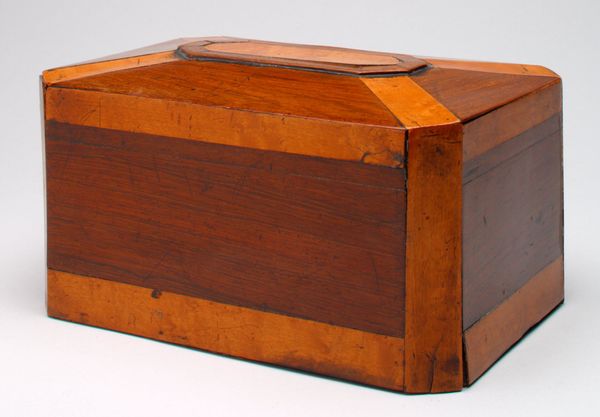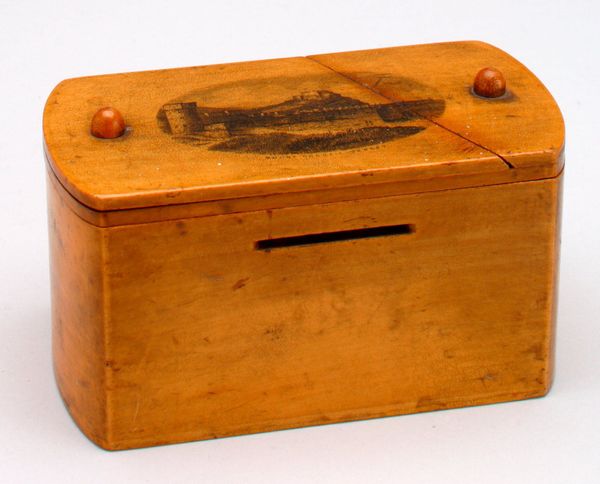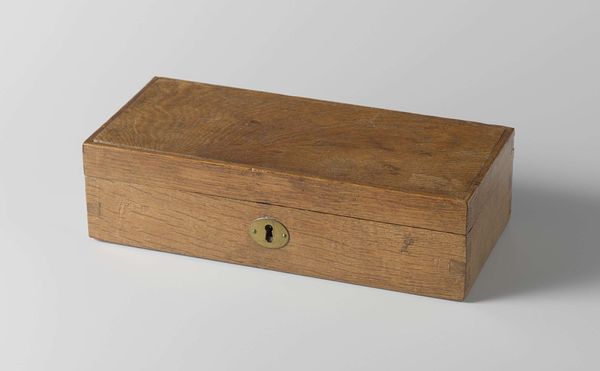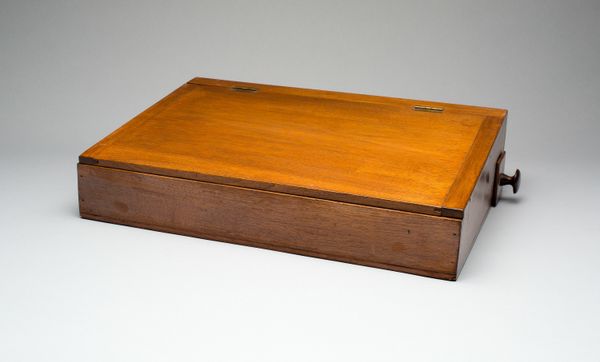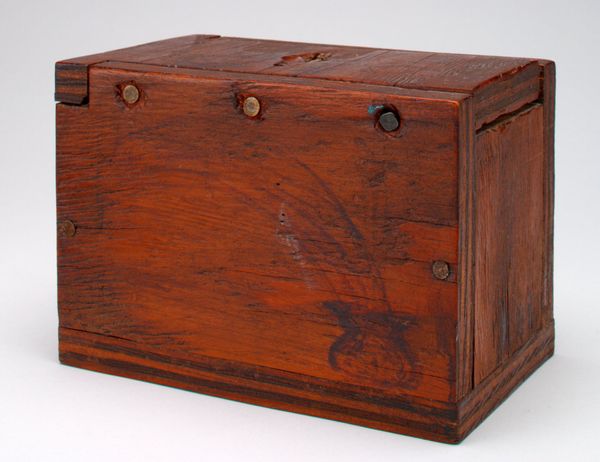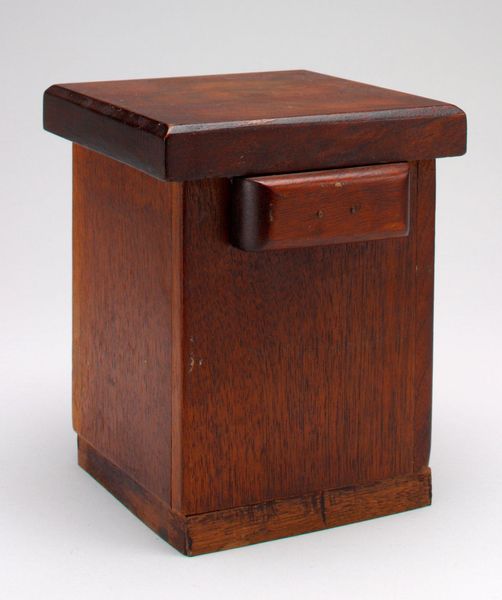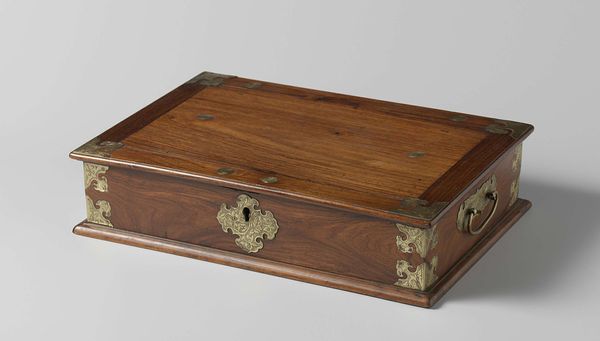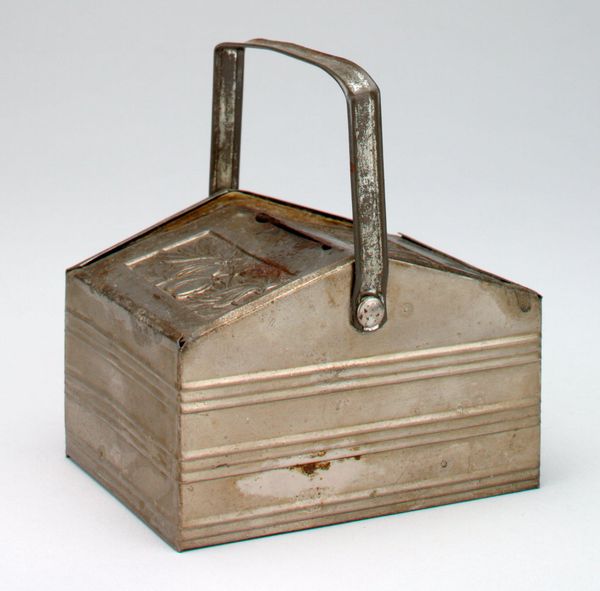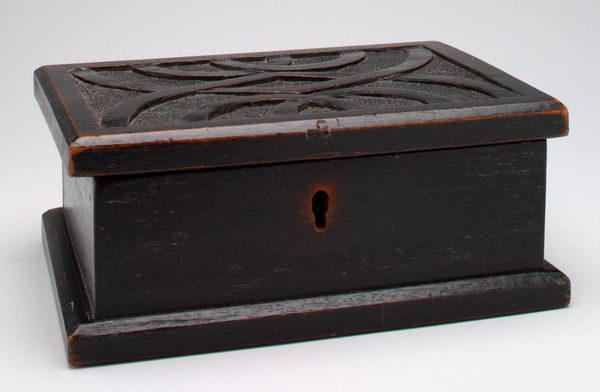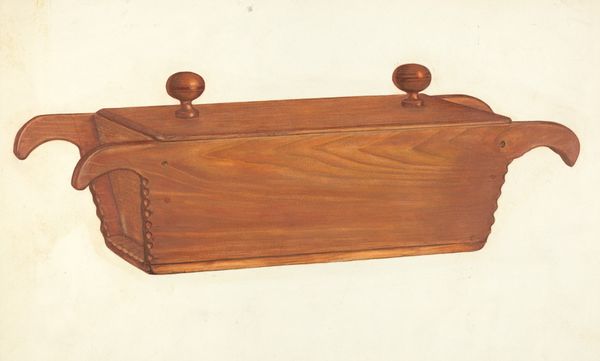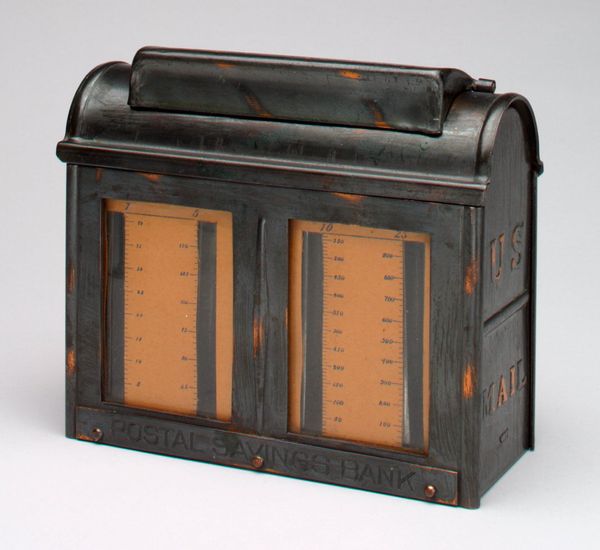
sculpture, wood
#
sculpture
#
sculpture
#
wood
Dimensions: 1 3/8 x 3 1/8 x 1 3/4 in. (3.49 x 7.94 x 4.45 cm)
Copyright: Public Domain
Curator: The piece before us, residing here at the Minneapolis Institute of Art, is a Money Box Still Bank, dating back to approximately 1860, crafted from wood and what appears to be forged metal. Editor: Immediately striking. There's such a blunt simplicity, a hand-hewn quality. You feel the weight of material processes even looking at the image. Curator: It certainly evokes a time of tangible, even constrained resources. This money box invites contemplation on the culture of savings. The era reflects an increase in industrialization but, perhaps, unequal wealth distribution, making personal savings essential for marginalized communities. The anonymity of the artist is also revealing: likely the piece was made by someone outside art world power structures, more of a practical craft than high art. Editor: Yes! Absolutely, and notice how the different materials—the planed wooden box and the rough-cut slot—speak to a kind of utilitarian aesthetic. There's a tension between crafted order and a kind of immediate need. I think it directly mirrors the tension inherent in the social need of saving capital and where, from this bank's creation, it actually went. Who got wealthy? Who used these? What conditions did they reflect? Curator: These questions get to the heart of why analyzing everyday objects matters. Saving wasn't neutral. For whom was this money box truly empowering, and for whom was it a tool of further economic marginalization under burgeoning capitalism? Consider also who controlled access to that wealth, held securely under lock and key. Editor: Right, the locking mechanism emphasizes control over labor and value extraction. Who controls the means to store that small wealth says a lot about that society’s social order. It raises questions about how such common tools participated in uneven distributions of capital. It's almost too obvious once we contextualize it like this. Curator: I agree, and bringing the making processes and lived history of an object to light reframes it from simply antique to actively prompting dialogues around the legacies of economic exploitation today. Editor: Indeed, and it shows that objects like this aren’t relics. The structures they enabled are still being forged today. We might call this an aesthetic, practical protest—art as both critique and commodity.
Comments
No comments
Be the first to comment and join the conversation on the ultimate creative platform.
